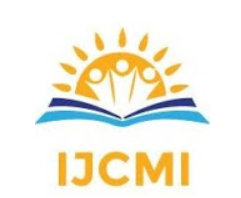Blockchain and AI Convergence: Creating Explainable, Auditable, and Immutable Data Ecosystems
DOI:
https://doi.org/10.70153/IJCMI/2023.15301Keywords:
Blockchain, Artificial Intelligence, Transparency, Immutability, Smart Contracts, Decentralized AI, Explainable AIAbstract
In today’s digital landscape, trust and transparency are critical for reliable and accountable AI systems. The integration of Blockchain with Artificial Intelligence (AI) offers a novel approach to ensuring data integrity, auditability, and ethical decision-making. This paper presents a hybrid architecture that combines Blockchain with AI to build transparent and immutable data models by leveraging smart contracts, decentralized storage via IPFS, and explainable AI methods to enhance data provenance and system accountability. Experiments were conducted using synthetic data and publicly available datasets, including the UCI Healthcare dataset and a financial dataset from Kaggle. Random Forest and Convolutional Neural Networks (CNNs) were implemented using PyTorch, while the Blockchain environment was simulated using the Ethereum testnet. Evaluation metrics included accuracy, latency, trust index, immutability score, and explainability coverage. Results indicate that while Blockchain integration introduces slight latency, it significantly boosts system trust and transparency. Accuracy experienced a minimal drop from 89.2% to 88.7% due to logging overhead. However, the Trust Index rose sharply from 0.42 to 0.93, Explainability Coverage increased from 18% to 91%, and the Immutability Score remained at 100%, validating Blockchain’s role in securing AI decisions. These outcomes demonstrate that the trade-off in performance is negligible compared to the substantial benefits in transparency and integrity. The proposed integrated framework thus offers a scalable and responsible solution for deploying AI in high-stakes domains such as healthcare, finance, and supply chains, where data security, trustworthiness, and explainability are essential for long-term adoption and regulatory compliance.
Downloads
References
Aggarwal, S., Chaudhary, R., Aujla, G. S., Kumar, N., Choo, K.-K. R., & Zomaya, A. Y. (2020). Blockchain for smart communities: Applications, challenges and opportunities. Journal of Network and Computer Applications, 144, 102635.
Dinh, T. T. A., Liu, R., Zhang, M., Chen, G., Ooi, B. C., & Wang, J. (2018). Untangling blockchain: A data processing view of blockchain systems. IEEE Transactions on Knowledge and Data Engineering, 30(7), 1366–1385.
Singamsetty, S. (2021). Neurofusion: Advancing Alzheimer's diagnosis with deep learning and multimodal feature integration. International Journal of Education & Applied Sciences Research, 8(1), 23-32.
Sathish, B. S. and P, Ganesan and Sanjay.S, Dola and Ranganayakulu, A and Revanth, Madamala and Rao, M. Nagabhushana, A Novel Design of Service Robot for Aged and Handicapped Using Raspberry Pi (February 27, 2020). 5th International Conference on Next Generation Computing Technologies (NGCT-2019)
Gilad, Y., Hemo, R., Micali, S., Vlachos, G., & Zeldovich, N. (2017). Algorand: Scaling byzantine agreements for cryptocurrencies. Proceedings of the 26th Symposium on Operating Systems Principles, 51–68.
Satyanarayana, S., Tayar, Y., & Prasad, R. S. R. (2019). Efficient DANNLO classifier for multi-class imbalanced data on Hadoop. International Journal of Information Technology, 11, 321-329.
Medisetty, A. (2021). Intelligent Data Flow Automation for AI Systems via Advanced Engineering Practices. International Journal of Computational Mathematical Ideas (IJCMI), 13(1), 957-968.
Mengelkamp, E., Notheisen, B., Beer, C., Dauer, D., & Weinhardt, C. (2018). A blockchain-based smart grid: Towards sustainable local energy markets. *Computer Science - Research and Development, 33*(1), 207–214.
Nguyen, D. C., Pathirana, P. N., Ding, M., & Seneviratne, A. (2020). Blockchain for secure EHRs sharing of mobile cloud based e-health systems. IEEE Access, 8, 106392–106409.
Satyanarayana, S., Gopikiran, T., & Rajkumar, B. (2012). Cloud Business Intelligence.
Peddisetti, S. (2021). AutoML Meets Big Data: A Framework for Intelligent and Automated Predictive Modelling. (2021). International Journal of Information and Electronics Engineering, 11(4), 46-57.
Shafay, M., Ahmad, R. W., Salah, K., Yaqoob, I., Jayaraman, R., & Omar, M. (2022). Blockchain for deep learning: A survey. Computers & Electrical Engineering, 99, 107788.
Sharma, P. K., Chen, M.-Y., & Park, J. H. (2018). A software defined fog node based distributed blockchain cloud architecture for IoT. IEEE Access, 6, 115–124.
Singh, S. K., Rathore, S., & Park, J. H. (2020). BlockIoTIntelligence: A blockchain-enabled intelligent IoT architecture with artificial intelligence. Future Generation Computer Systems, 110, 721–743.
Rachiraju, S. C., & Revanth, M. (2020, May). Feature extraction and classification of movie reviews using advanced machine learning models. In 2020 4th international conference on intelligent computing and control systems (ICICCS) (pp. 814-817). IEEE.
Wan, Z., Guan, Z., & Chen, T. (2021). BFL: A decentralized federated learning framework via blockchain. IEEE Transactions on Big Data, 8(6), 1838–1853.
Wang, S., Ouyang, L., Yuan, Y., Ni, X., Han, X., & Wang, F.-Y. (2019). Blockchain-enabled smart contracts: Architecture, applications, and future trends. IEEE Transactions on Systems, Man, and Cybernetics: Systems, 49(11), 2266–2277.
Shylaja. (2021). Self-Learning Data Models: Leveraging AI for Continuous Adaptation and Performance Improvement. International Journal of Computational Mathematical Ideas (IJCMI), 13(1), 969-981.
Zheng, Z., Xie, S., Dai, H., Chen, X., & Wang, H. (2018). An overview of blockchain technology: Architecture, consensus, and future trends. 2017 IEEE International Congress on Big Data (BigData Congress), 557–564.
Zyskind, G., Nathan, O., & Pentland, A. (2015). Enigma: Decentralized computation platform with guaranteed privacy.







